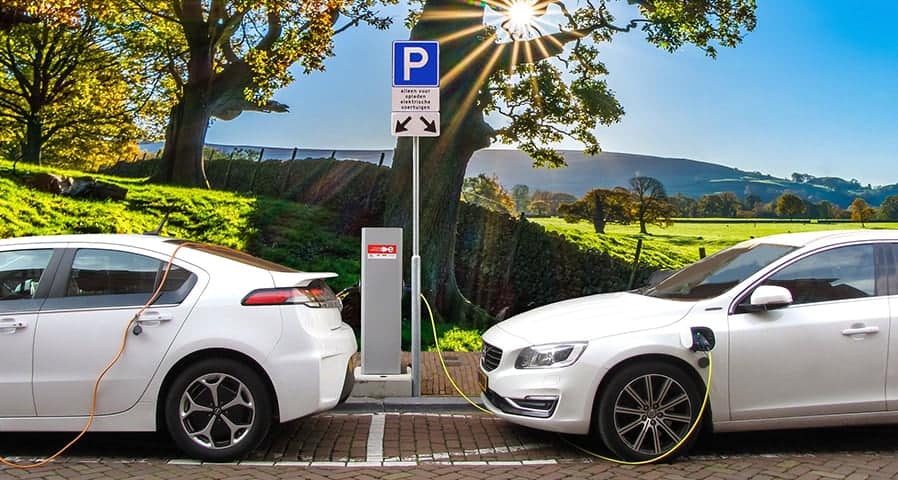Electric vehicles (EV) can use alternating current (AC) and direct current (DC) for fuel, but what is the difference between the two currents? Before answering the question, you need to know two things about EVs and electrical currents.
- The power transmitted from the vehicle’s charging socket is an alternating current. It doesn’t matter what EVs make or model.
- The power in the vehicle’s battery is direct current, and it applies to all batteries.
What is the Difference Between AC and DC?
AC and DC only have one thing in common both are a type of electrical current. The uses, speeds, and directions are different, and it’s information you need to know.
Alternating Current (AC)
Alternating currents can change direction during flow. It is also generated from renewable energy sources. Hydro and wind-powered turbines, along with rotating generators produce AC power. Alternating currents transport efficiently over long distances, which is why it’s used in power grids around the world. Most homes and office buildings also run on alternating currents.
Direct Current (DC)
Direct currents travel in a straight line and can also be generated by renewable power like solar panels. LED lighting runs on DC, and direct current can store energy. Batteries in your EV and laptops store DC power. The charger converts AC power from the electrical outlet into a useable direct current.
You get AC power from the electric grid that your charger converts into the direct current that powers your battery.
You have probably heard that DC chargers work faster at charging EV batteries. While that is true, there are a few things you need to be aware of before making a decision on what type of EV charger to install at your facility. We highly recommend reading, What are DC Fast Chargers and How Do They Work?
Electric Mobility and Charging
EV charging current can be AC or DC. It depends on the charging station, and you can use either one. Your EV battery only stores DC energy. When you use an AC charging station, it takes longer, and you get fewer kilowatts of electricity due to the slower alternating current. The conversion to DC also takes place in the battery slowing down charging times.
DC charging stations convert AC power at the station. The power flows in a straight line to the battery. Charging stations have larger converters than the EV’s battery giving you more kilowatts of electricity at a faster rate. Some DC chargers can fuel an EV in 15 minutes, delivering 350kW of power.
You probably have a few questions concerning some of the EV terminology used in this blog. Did you know we have an entire blog dedicated to explaining EV terms? You can check it out here, and for any additional questions, you can schedule a call with one of our EV charger experts here or click the button below.
What are the AC and DC Charging Curves?
The charging curve is something to consider. An AC charger delivers power in a flat line, while a direct current has a noticeable downward spike.
AC chargers are small, onboard components that can only receive a limited amount of power at a time. AC power is a slow and continuous flow until the battery is fully charged. DC chargers produce a more powerful electrical flow. The battery is charged faster, and the degrading curve appears as the current slows down, usually when the battery is 80-percent full.
DC charging is faster, but other factors affect charging speeds.
- Low battery percentage
- Battery condition
- Weather
Use AC and DC Power
Electrical vehicles rely on AC and DC power. You get AC power from the grid that’s converted into useable DC energy. It takes longer to fully charge an EV battery at an AC charging station, but it still powers your vehicle. DC charging times are faster and great when you’re in a hurry. To speak with an Apogee Charging Solutions EV charging expert, call 484-816-2076 or email [email protected].








0 Comments